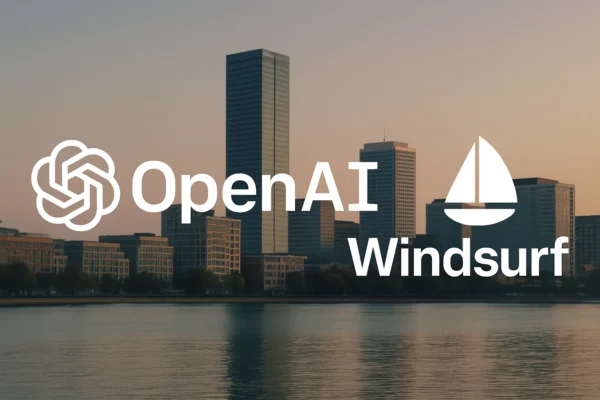
Explore the evolution of AI architectures, from rule-based systems to the powerful reasoning machines driven by Transformers. Learn about key breakthroughs, technical innovations, and the future of AI models in this comprehensive guide.
Artificial Intelligence, once a subject of science fiction, has become a defining force of the 21st century. Behind its breathtaking capabilities—be it natural language understanding, image generation, or autonomous problem-solving—lies the steady evolution of architectures, the foundational blueprints that govern how machines learn and reason. This article traces the development of these architectures, from early symbolic reasoning to today’s large-scale transformer-based systems, highlighting key transitions, technical inflection points, and paradigm-shifting innovations.
Rule-Based Systems and Symbolic AI (1950s–1980s)
The first era of AI was symbolic. Known as “Good Old-Fashioned AI” (GOFAI), this period focused on encoding intelligence through logic-based, human-designed rules. Systems like the Logic Theorist (1956) and MYCIN (1972) portrayed this approach, demonstrating that machines could mimic aspects of expert reasoning. However, symbolic AI lacked robustness—it struggled with uncertainty, ambiguity, and scalability. The lesson was clear: real-world intelligence needs to adapt and learn, not just follow fixed instructions.
Neural Networks: Learning from Data with Backpropagation (1980s–1990s)
The field shifted toward learning-based models with the revival of neural networks. While the perceptron had been introduced in 1958, it was the rediscovery of backpropagation in the 1980s that unlocked multi-layer neural networks’ potential. These multi-layer perceptrons (MLPs) could approximate complex functions, but progress was limited by compute power and data availability.
A landmark example was LeNet-5 (1998) by Yann LeCun, a convolutional neural network (CNN) that used weight sharing and spatial hierarchies to classify digits—an early glimpse into deep learning’s future.
RNNs and LSTMs: Modeling Sequences and Memory (1990s–2015)
Feedforward networks lacked memory. To model sequences like speech or language, Recurrent Neural Networks (RNNs) were introduced, allowing temporal dependencies. However, RNNs suffered from vanishing gradients, making them ineffective for long sequences.
Long Short-Term Memory (LSTM) networks (Hochreiter & Schmidhuber, 1997) solved this with gated mechanisms, enabling stable long-term learning. By the 2010s, LSTMs and their variant GRUs were powering systems for translation, speech recognition, and language modeling.
Transformers: The Breakthrough Architecture (2017–Present)
In 2017, a paper titled “Attention is All You Need” by Ashish Vaswani, Noam Shazeer, Niki Parmar, Jakob Uszkoreit, Llion Jones, Aidan N. Gomez, Łukasz Kaiser, and Illia Polosukhin introduced the Transformer architecture. It eliminated recurrence and relied entirely on self-attention, enabling parallelization and better long-range dependency handling.
Key innovations:
- Self-attention mechanism: Allows the model to weigh the importance of each word relative to others.
- Positional encoding: Injects sequence order information.
- Multi-head attention: Learns different representation subspaces.
This design led to explosive scalability. Models like BERT (2018) and GPT-2 (2019) followed, with performance scaling rapidly with more parameters, training data, and compute.
Why Bigger Models Worked Better: The Power of Scaling (2018–2022)
OpenAI and DeepMind revealed an empirical insight: loss decreases predictably with increases in model size, dataset size, and compute—now known as scaling laws (Kaplan et al., 2020). For example:
- GPT-3 (2020) had 175 billion parameters, achieving near-human performance on many tasks.
- DeepMind’s Chinchilla (2022) showed optimal scaling involves balancing parameters and tokens, not just going bigger.
This era cemented a shift: performance is not just about architecture—but also scale, data quality, and training dynamics.
Mixture of Experts: Making Big Models Smarter and Faster (2021–Present)
The scaling game had a compute cost. To counter this, Mixture of Experts (MoE)—a technique to increase model capacity without increasing latency was introduced.
MoE architectures like Switch Transformer (Google, 2021) and GLaM (Google, 2021) activate only a subset of model components (experts) for each input. GPT-4 is rumored to use a similar sparse mixture approach.
Technical highlights:
- Uses a gating network to select active experts.
- Reduces FLOPs while maintaining or improving performance.
Challenges include expert routing, load balancing, and training stability.
Multimodal AI: How Models Understand Text, Images, and More (2021–Present)
Real-world intelligence is multimodal. Starting with CLIP (2021) and DALL·E, OpenAI introduced models that jointly learn from text and images.
This trend accelerated with:
- Flamingo (DeepMind, 2022): Vision-language model using cross-attention.
- GPT-4V (2023): Adds vision to GPT-4.
- Gemini 1.5 (2024): Handles text, vision, audio, and code.
Multimodal models rely heavily on shared embedding spaces and attention mechanisms that integrate signals across modalities.
LLM Agents and Tool Use: AI That Plans, Solves, and Acts (2023–Present)
A new paradigm emerged where models don’t just answer—they plan, retrieve information, call APIs, and reason. This is the era of AI agents.
Key components:
- Function calling (OpenAI): LLMs interface with tools.
- Retrieval-Augmented Generation (RAG): Combines LLMs with external knowledge.
- Memory and planning modules: Devin by Cognition (2024) introduced an autonomous dev agent with iterative code-debug cycles.
The architecture now becomes a system—not just a model.
What’s Next: Flexible, Self-Improving AI Models (2024–Future)
Several emerging ideas hint at what lies beyond Transformers:
- Liquid Neural Networks (MIT, 2021): Time-continuous models with adaptive dynamics.
- HyperNetworks: Networks that generate weights for other networks.
- Dynamic architectures: Potential for networks that restructure themselves during inference.
Rumors around GPT-5, Claude-Next, and other frontier models point to architectures that are modular, dynamic, and potentially self-improving.
The evolution of AI architectures—from rule-based systems to transformers and beyond—has been central to every leap in AI capability. Each architectural shift unlocked new abilities: learning from data, understanding sequences, processing language, seeing images, or using tools. As we move forward, architecture will continue to define the outer limits of what AI can understand, generate, and autonomously achieve.
The future might not be a single model—but a network of dynamic, cooperating systems that blend memory, reasoning, perception, and action. And it all comes down to architecture.






